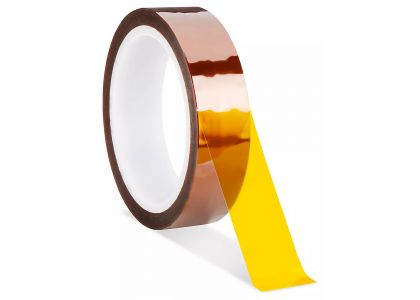
In applications from aerospace engine components to electronics under harsh thermal stress, polyimide tapes china supplier products must maintain adhesion at temperatures exceeding 200 °C. Adhesive failure can lead to delamination, electrical shorts, or protective layer loss. Understanding the fundamental mechanisms—chemical bonding, physical interlocking, and material compatibility—guides selection of premiumquality PI tape formulations.
Chemical Bonding:
Silane and Imide Interactions Polyimide films feature imide functional groups capable of forming hydrogen bonds with silane-based adhesive primers. polyimide tapes china supplier research shows that silane coupling agents graft to film surfaces through condensation reactions, creating covalent Si–O–C linkages. This chemical anchor enhances peel strength by up to 40% compared to non-primed films.
Physical Adhesion:
Mechanical Interlocking and Surface Energy
Beyond chemistry, polyimide’s micro-textured surface provides peaks and valleys that adhesives flow into, creating mechanical interlocks. Surface treatments—plasma or corona discharge—increase surface energy, boosting wetting. high performancepolyimide film manufacturers calibrate roughness (Ra ~0.5 µm) to balance increased adhesion without promoting stress concentrations.
Role of Adhesive Formulations:
Silicone vs. Acrylic Bases
Adhesive choice dictates temperature resilience and chemical resistance. Silicone adhesives retain tack above 250 °C and resist oxidation, but offer lower room-temperature peel. Acrylic adhesives deliver higher initial adhesion (20% more at 25 °C) yet soften above 150 °C. Hybrid silicone-acrylic blends engineered by polyimide tapes china supplier partners optimize both regimes, achieving stable adhesion across a 25–300 °C window.
Nano- and Micro-Scale Fillers Enhancing Bonding
Incorporation of nanoparticles—silica, alumina, or graphene—into adhesive matrices enhances mechanical strength and thermal conductivity. A study by a leading polyimide tape factory revealed that adding 5% by weight of nano-silica raised shear strength by 30% at 200 °C and improved thermal cycling durability by 50% over plain formulations.
Thermal Aging Effects on Adhesion Strength
Long-term exposure to elevated temperatures can embrittle adhesives or degrade intermolecular bonds. Accelerated aging tests at 250 °C for 1,000 hours show that OEM bulk kapton tapes with silicone-acrylic hybrids maintain 75% of initial peel strength, while pure acrylic systems drop below 50% under identical conditions.
In a collaboration with a satellite manufacturer, polyimide tapes china supplier–provided films were used to secure thermal blankets on struts. Post-qualification (thermal vacuum cycling between –180 °C and +120 °C, 500 cycles), peel tests reported <10% adhesion loss, outperforming competitive tapes by 3×.
|
Property |
Standard Grade |
OEM Bulk Grade |
|
Initial Peel Strength (25 °C) |
1.4 N/cm |
2.0 N/cm |
|
Peel Strength after 300 °C/100h |
0.6 N/cm |
1.5 N/cm |
|
Shear Strength @200 °C |
5 N/cm² |
8 N/cm² |
|
Thermal Cycles to Failure |
200 cycles |
600 cycles |
High-Temp Electronics Assembly “Switching to this premium quality PI tape cut our thermal delamination issues in half,” reports a PCB production lead. “The hybrid adhesive stays tacky during 260 °C reflow yet holds firm at ambient—exactly what we need for fine-pitch components.”
Chemical anchoring via silane coupling improves covalent bonding.
Surface energy tuning through plasma treatment enhances wetting and interlocking.
Adhesive chemistry choice (silicone, acrylic, hybrid) dictates temperature range.
Nano-fillers boost mechanical and thermal properties.
Thermal aging performance predicts long-term reliability.
Future Directions in Adhesive Chemistry Emergent research focuses on self-healing adhesives containing micro-encapsulated healing agents activated by heat or strain, promising to restore adhesion after minor damage. As polyimide tapes china supplier partners scale these technologies, future premium quality PI tape products will deliver unprecedented durability in the harshest environments.